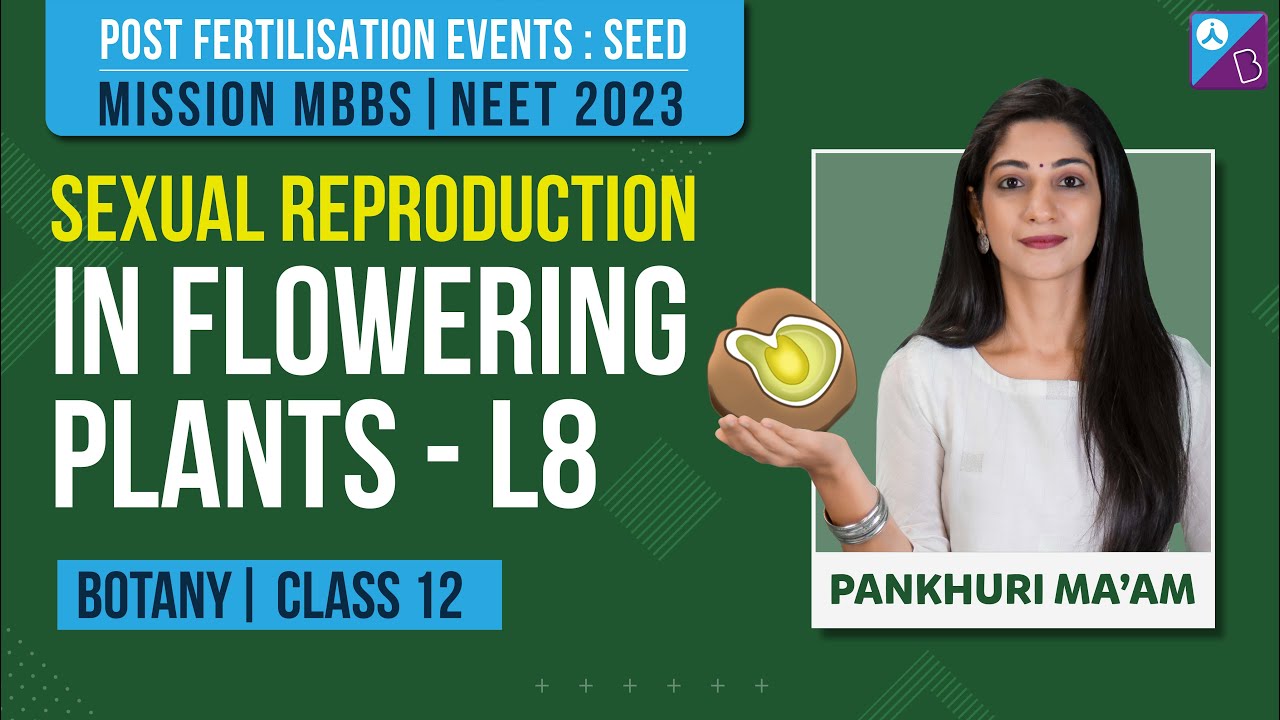Table of Contents
Introduction
Reproduction is the biological process where a new individual organism is produced by its parents. In general, plants reproduce either asexually i.e. without seed formation or sexually i.e. with seed formation. The parts of plants involved in asexual reproduction are called vegetative parts (e.g. leaves, roots, stem) and parts of plants involved in sexual reproduction are called reproductive parts (e.g. a flower).
Let’s learn how a flower develops into fruits, seeds and different means of seed dispersal.
Also Read: Fruit Formation
Seed Formation
A seed is formed when fertilised ovule divides by mitosis. It stores food and has the potential to develop into a new plant under optimal conditions.
Fertilization is the process of fusion of male gamete and female gamete to form a zygote. Pollen grains are transferred to stigma by various pollinating agents such as water, wind, butterflies, insects, animals, birds, etc. After reaching stigma, the male gamete fuses with the egg in the ovule and forms a zygote. Thus fertilization takes place and so the formed zygote divides and develops into an embryo.
Following the fertilization, every part of the flower sheds off except the ovary. The ovary of the flower develops into the fruit while ovules develop into seeds. The formation of seed completes the process of reproduction in plants. Within the seed, the growing embryo develops and matures.
Also Read: Significance of Seeds and Fruits Formation
Recommended Video:
Seed – Post Fertilisation Events Class 12 Concepts | Reproduction in Flowering Plants

Seed Dispersal
The seeds formed that fall on the ground might not always be planted by humans. They are dispersed by certain agents such as wind, water, animals, etc.
Seeds require adequate sunlight, water, space, and minerals for proper growth. The distribution of seeds in different places avoids the problem of competition for basic requirements and results in the healthy growth of the plant.
Seed dispersal takes place both naturally as well as artificially. Botanists and garden-keepers practice the artificial methods of seed dispersal. The natural methods of seed dispersal are discussed below:

Wind Dispersal
Seeds of a few plants such as dandelions have feathery bristles and can be carried away by the wind. These are blown away by the wind and land in different places. A few seeds land at places suitable for growth.
Water Dispersal
The seeds float away in water from the parent plant and get dispersed. For eg., if a mangrove seed falls in the water, it is carried away through streams and rivers to grow somewhere else.
Animal Dispersal
Animals disperse seeds in a variety of ways. A few plants produce seeds inside fleshy fruits that are eaten by an animal. The fruit gets digested by the animals and the seeds are passed out through the digestive tract. Squirrels bury the seeds but might not return to take them. These seeds grow into a new plant.
Also Read: Seed Formation
To know more about seed formation and seed dispersal, keep visiting BYJU’S website or download BYJU’S app for further reference.

Nice explanation
It is really good to study at byjus
Byjus provides good information in biology